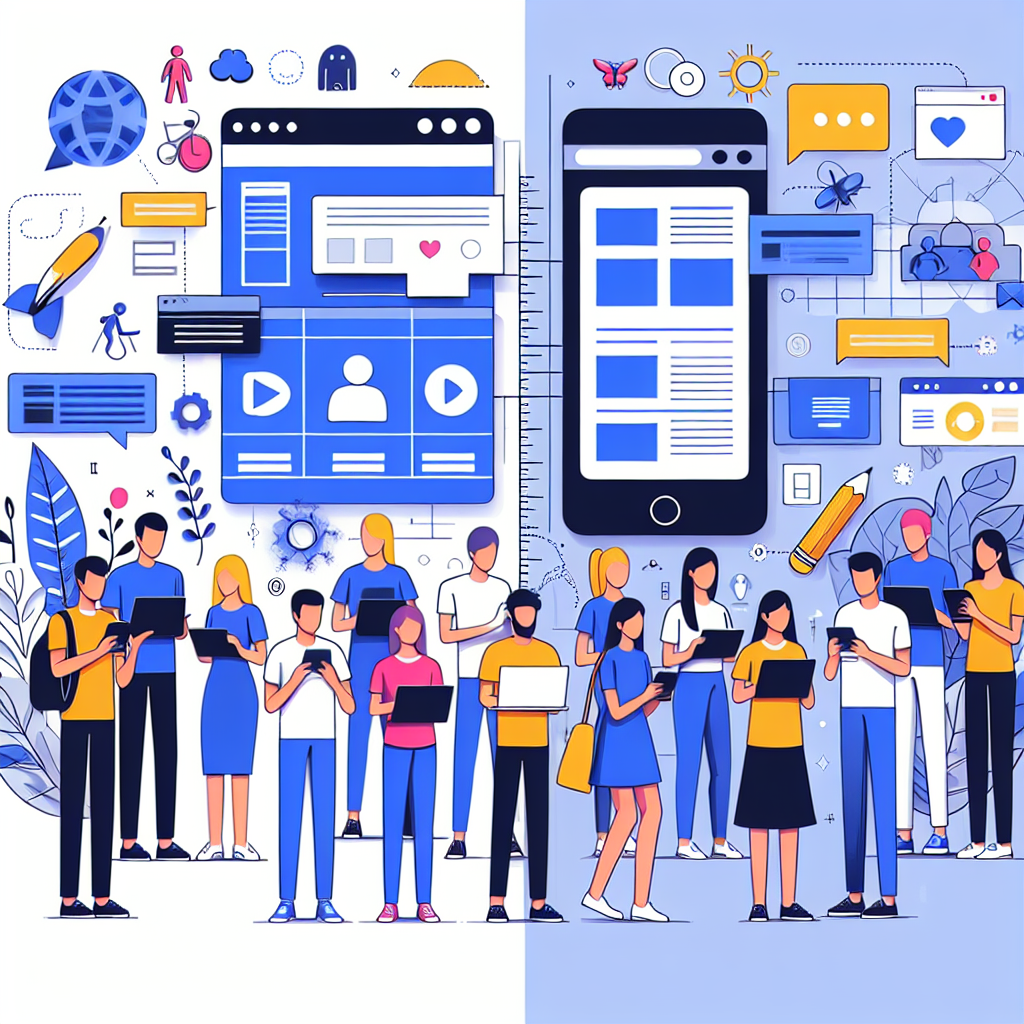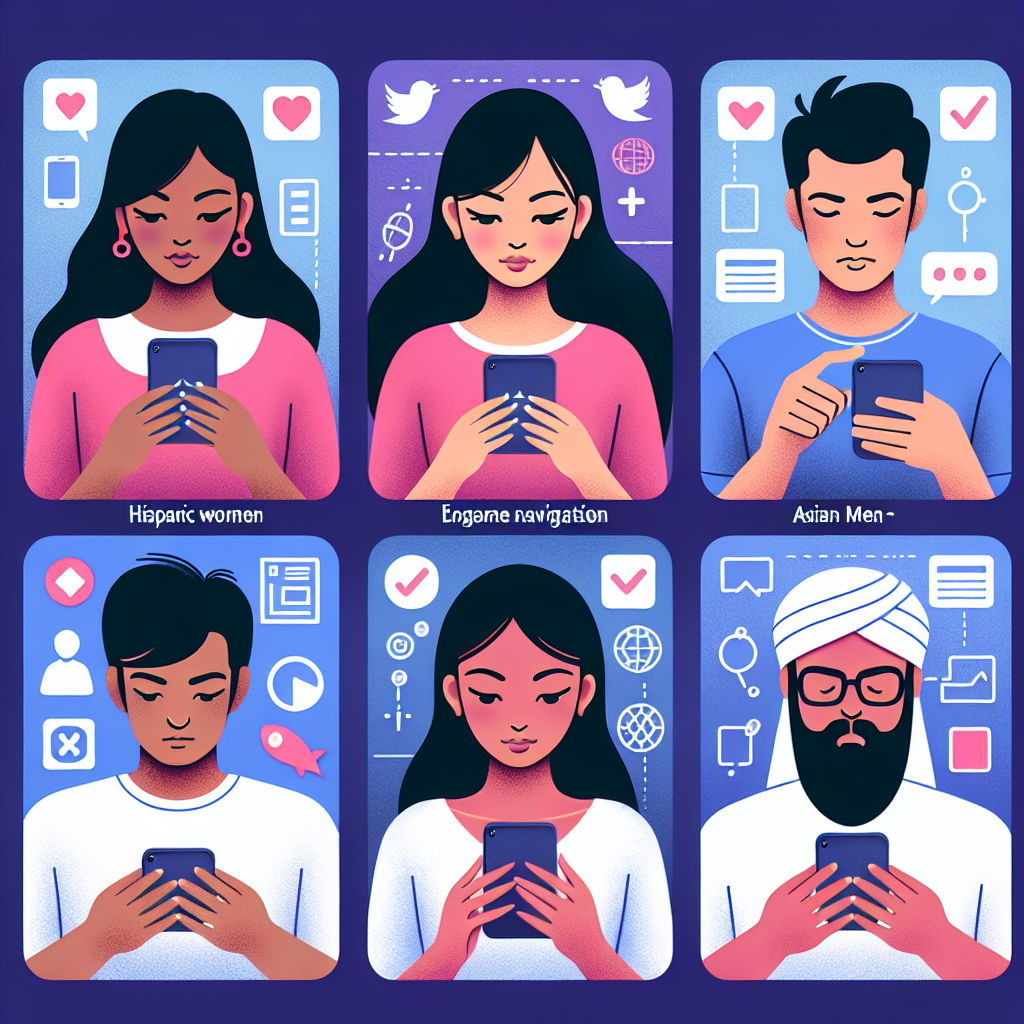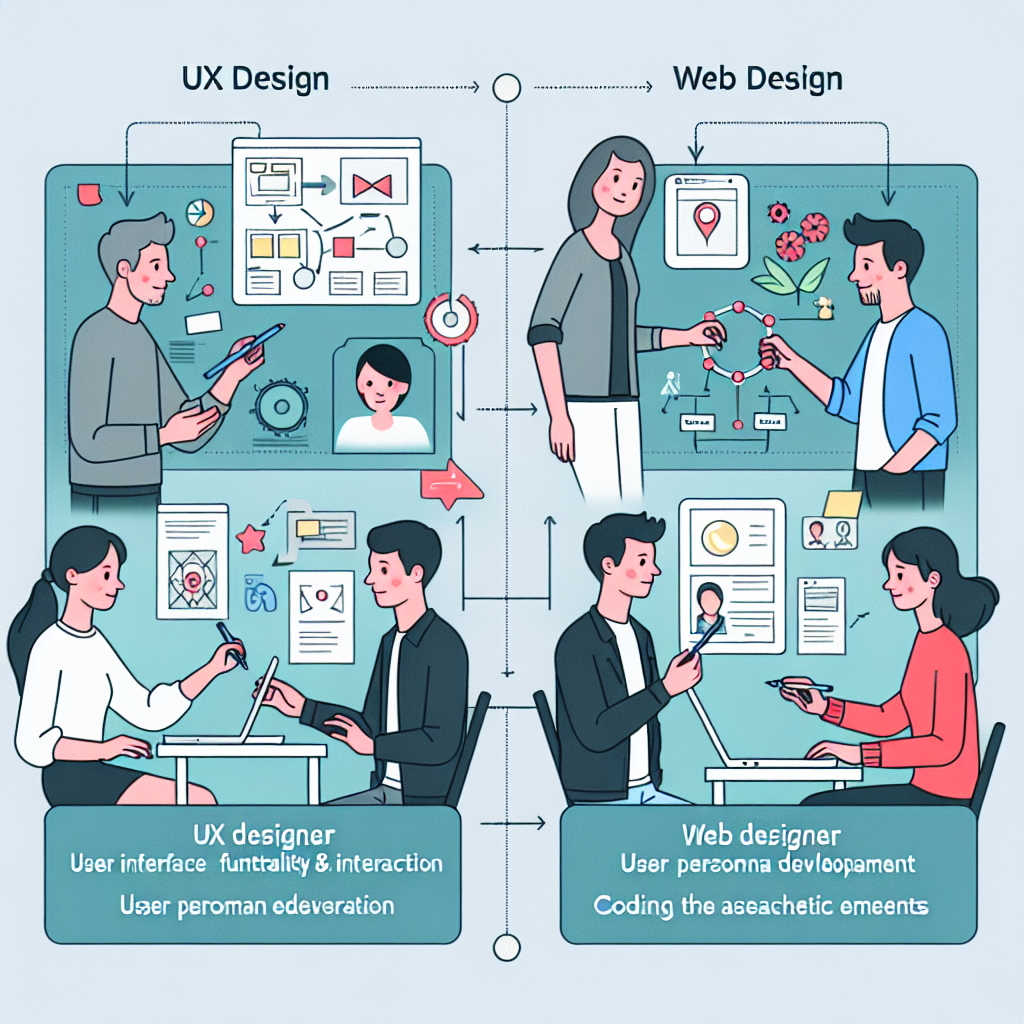Expert Software Development Solutions by Artivale: Bridging the Gap Between UX and Web Design.

What is the Difference Between UX Design and Web Design?

When diving into the world of digital design, you might wonder: What is the difference between UX design and web design? While they often overlap, each plays a unique role in the digital landscape. Lets break it down in simple terms.
Understanding UX Design
UX design, or User Experience design, focuses on the overall experience a user has when interacting with a product, especially websites and applications. Imagine you walk into a new cafe. If the layout is confusing, the tables are too close together, or the staff is unhelpful, your experience suffers. Similarly, in digital terms, if a website is hard to navigate or its content is unclear, users will leave.
In fact, studies show that improving UX can lead to a 400% increase in conversion rates! ⭐
Understanding Web Design
Web design, on the other hand, is often more focused on the aesthetics and layout of a website. Think of it like decorating that same cafe. It’s about creating an inviting atmosphere—choosing the right colors, fonts, images, and overall style. Good web design makes a site look professional and appealing, but it doesn’t guarantee a positive user experience.
For instance, if your website looks gorgeous but users can’t find the information they need, they’ll still be frustrated. This is where the synergy between UX and web design becomes vital. ✔️
Key Differences
| Aspect | UX Design | Web Design |
| Focus | User experiences and satisfaction | Visual aesthetics and layout |
| Goal | To create seamless interactions | To capture attention and convey brand identity |
| Tools | User research, wireframes, prototyping | Graphics software, HTML/CSS |
| Outcome | Low bounce rates, high engagement | Visually appealing sites |
| Testing | A/B testing, user feedback | Design critiques, revisions |
| User base | All users | Target demographics |
| Time spent | Extensive research and testing | Creative and technical work |
| Success metrics | Conversion rates, user satisfaction | Visual appeal, brand consistency |
| Approach | Holistic view | Artistic view |
Why This Matters to Your Business
Understanding the distinction between UX design and web design is essential for any business looking to establish a strong online presence. ⭐ Common misconceptions often lead businesses to neglect one aspect over the other, resulting in poor website interaction and loss of potential customers.
Real-Life Scenario
Consider a local e-commerce store that recently launched its website. They invested heavily in beautiful graphics and engaging colors. However, their UX was lacking: users couldn’t easily find products, leading to frustration and abandoned carts. By partnering with a service like artivale.com, they implemented UX improvements, reducing their bounce rate by 30%—transforming their site into a place where users find joy in shopping! ⭐
If this resonates with you, think about how your own website engages users. Are they having a memorable experience, or simply browsing in confusion? Now is the time to enhance your site’s performance!
Get in Touch!
At artivale.com, we have over 20 years of experience in delivering top-notch digital solutions that blend both UX and web design. Our professional specialists guarantee all services in one place. ⭐ Looking for a new website that captivates and converts? Sign up now by calling [email protected] or visiting our website!
Frequently Asked Questions
- What is the primary goal of UX design? To enhance user satisfaction by improving usability and accessibility.
- How does web design impact SEO? Good web design can improve site speed and user engagement, positively influencing SEO.
- Can a website be effective without good UX? While it can be visually appealing, poor UX will drive users away.
- What tools are commonly used in UX design? Tools include wireframing software, user testing platforms, and analytics tools.
- Is UX design more important than web design? They are interlinked; neglecting either can hinder business success.
- How often should I update my website’s design? Regular updates every year or after major UX findings are crucial.
- What’s a common mistake in web design? Overloading a site with too much information and visuals can confuse users.
- How does UX design affect conversions? Better UX leads to lower bounce rates and higher conversion rates by catering to user needs.
- What is a common UX improvement? Streamlining navigation menus and enhancing load speed are effective improvements.
- How can I measure UX success? By tracking metrics such as user feedback, completion rates, and time spent on site.
Why Understanding the Difference Between UX Design and Web Design Can Transform Your Business

Have you ever considered how the distinction between UX design and web design could affect your business’s success? By delving into this difference, you can unlock the true potential of your digital presence! ⭐ Understanding these terms is not just for designers; it’s crucial for entrepreneurs, marketers, and anyone looking to establish a robust online footprint.
The Importance of UX Design
UX design is all about creating a smooth and enjoyable experience for users. Picture this: A potential customer stumbles upon your website. What happens next? If they are greeted with complicated navigation and lengthy load times, they might bounce off your site within seconds. On the flip side, a well-designed UX leads to satisfied customers who are more likely to return—a win-win situation!
Did you know that businesses that invest in user experience enjoy a 70% increase in customer loyalty? ⭐ This loyalty translates to repeat sales and positive word-of-mouth, essential to growing your business.
The Role of Web Design
Web design focuses on the aesthetic aspects of a website, from layout to color schemes. While a visually appealing site can attract visitors, if it doesn’t also create a seamless experience, your site risks appearing like a beautifully wrapped gift that has nothing inside. The visual elements must work together to help users navigate easily and find what they’re looking for.
Brand perception and first impressions are crucial. According to a study, 94% of first impressions are related to your websites design. Investing in the right web design means an appealing front that supports—rather than hinders—user experience.
Combining UX and Web Design for Success
So, how do these two concepts work together to elevate your business? When UX and web design are in sync, your website can offer an intuitive and visually attractive experience. This synergy keeps users engaged, encourages them to explore your offerings, and increases conversion rates significantly.
- ⭐ Enhanced User Engagement: A cohesive UX and web design attracts and retains users.
- ⭐ Higher Conversion Rates: An effective design can encourage visitors to take action, whether it’s signing up for a newsletter or making a purchase.
- ⭐ Broader Reach: A user-friendly site can attract more visitors, boosting your visibility online.
- ⭐️ Increased Trust: Users are more likely to trust a site that is well-designed and easy to use.
- ⭐ Improved Brand Reputation: A great experience fosters positive impressions, which can lead to customer referral.
Real-World Impact on Businesses
Consider the story of a local fitness studio that revamped its website by partnering with artivale.com. They understood that improving both UX and web design was essential. As a result:
- Their membership sign-up rate increased by 50% within three months after redesigning their platform.
- User feedback highlighted how easy it was to navigate class schedules, making it a joy rather than a chore to find fitness classes.
By recognizing the difference and leveraging both design strategies, they transformed their approach and saw tangible results. ⭐ This example shows us that understanding these concepts is not merely academic; it has a direct bearing on your bottom line.
Take Action to Transform Your Business
Whether running an e-commerce site, a blog, or a corporate platform, it is imperative to focus on both UX and web design. The first step is identifying the strengths and weaknesses of your current setup. Are users enjoying their experience? Is your site visually appealing? If the answers are not what you want to hear, it’s time to reconsider your strategy.
At artivale.com, we offer a comprehensive suite of services, combining UX and web design to drive your business forward. With over 20 years of experience and a focus on delivering exceptional results, we can help you create a site that resonates with your audience. Ready to elevate your online presence? Contact us at [email protected] or visit our website to get started! ⭐
Frequently Asked Questions
- What happens if I neglect UX design? Neglecting UX can lead to high bounce rates and lost potential sales.
- How often should I update my web design? Ideally, every couple of years or whenever significant UX issues are identified.
- Can good UX design increase sales? Absolutely! Improved UX can lead to higher conversion rates.
- Is visual appeal enough for a website? No, without strong UX, a beautiful design won’t sustain user interest.
- Do I need both UX and web design for my business? Yes, both are essential for a successful online presence.
- What is the cost of better web design? Depending on the complexity, it can range from 250 EUR to several thousand EUR.
- How can I improve my sites UX? Gather user feedback, run usability tests, and continuously optimize your site.
- What tools can help in UX and web design? Tools like Figma, Sketch, and Adobe XD are great for design; Google Analytics for UX.
- How do you measure website design success? By analyzing metrics like conversion rates and user engagement.
- Can I handle website updates myself? Depending on your skills, but professional input is always beneficial!
How Misconceptions About UX Design and Web Design Can Hinder Your Online Success

In the digital age, misconceptions about UX design and web design can significantly impact your online success. If you think these terms are interchangeable or that focusing solely on one over the other is enough, you might be setting your business up for failure. Let’s explore how these misconceptions can hold you back and what you can do to avoid these pitfalls! ⭐
Common Misconception: UX and Web Design Are the Same
One of the biggest misunderstandings is simply thinking that UX design and web design are identical. While they are closely related, the focus and methods differ significantly. As mentioned earlier, web design covers the visual aspects of a website, like colors, layouts, and fonts. UX design, however, goes deeper into the user’s interaction with that website—their entire journey from landing on the page to completing a desired action.
For instance, if a small retail business believes that simply having a stunning website means their job is done, theyre doomed to disappoint their users. A lack of intuitive navigation or easy-to-find information can frustrate visitors, driving them away regardless of how attractive the site looks. Did you know that nearly 88% of online consumers are less likely to return to a site after a bad experience? ⭐
Misconception: Visual Appeal Is More Important Than Usability
Another common belief is that a visually stunning site is all you need. While visual design plays a critical role in attracting visitors, it cannot replace functionality. Imagine walking into a beautifully decorated store that’s impossible to navigate. You might admire the decor but leave empty-handed and frustrated. This is how an attractive yet poorly functioning website can function in the online world.
Businesses that emphasize aesthetics over usability typically see high bounce rates, where users leave before engaging with the content. A study found that 47% of users expect a webpage to load in two seconds or less. When it doesn’t, they’re likely gone for good! ⭐
Misconception: One-Time Investment Is Enough
Some entrepreneurs believe that once they’ve invested in their web design and UX design, they can set it and forget it. Unfortunately, this mindset neglects the importance of ongoing analysis and updates. User needs are not static; they evolve over time, and so should your website.
Regular assessments and updates are crucial for maintaining a competitive edge. A well-maintained site can improve user experience, boost SEO rankings, and encourage customer loyalty. For example, a software company might initially launch a sleek site, but as user feedback comes in, they discover a need for more instructional content and resources. By adapting based on feedback, they create a more robust user experience and see a corresponding increase in customer engagement. ⭐
Real Consequences of Misunderstanding
Let’s look at a real-world example. Consider an online learning platform that initially focused solely on UX design, aiming for easy navigation and user engagement. They had a simple layout, but their branding was inconsistent, leading to confusion. Meanwhile, their web design was outdated and visually unappealing, resulting in high bounce rates and low registration conversions. They didn’t understand that even the best user experience wouldn’t make up for poor design.
By eventually recognizing this mistake and working with a professional service like artivale.com, they updated both their UX and web design. They saw their user registrations rise by 70% within two months! Users felt more compelled to interact with the content, having a flawless experience coupled with an appealing design that reflected the brand’s identity. ⭐
Overcoming Misconceptions
To avoid these common traps, here are a few actionable steps you can take:
- ⭐ Educate Yourself: Take the time to understand the differences between UX design and web design. Awareness is the first step to improvement.
- ⭐ Gather Feedback: Regularly solicit user feedback to improve both aspects continuously. Surveys and analytics can guide you.
- ⭐️ Invest in Expertise: Collaborate with professionals who understand the synergy between UX and web design, like artivale.com.
- ⭐ Monitor & Adapt: Utilize analytics tools to track user behavior and adjust your design strategy to meet evolving needs.
Ready to Transform Your Online Presence?
By dispelling these misconceptions about UX design and web design, you can open the door to greater online success. Don’t let outdated beliefs limit your potential! Consider working with experienced specialists who can help create a website that not only looks great but also delivers an outstanding user experience. Reach out to us at [email protected] or visit artivale.com to get started on transforming your digital strategy today! ⭐
Frequently Asked Questions
- What are the main differences between UX and web design? UX focuses on user experience, while web design is about visual aesthetics and layout.
- How can poor design affect my business? It can lead to high bounce rates, low engagement, and decreased sales.
- Should I prioritize UX over web design? Both are essential; neglecting one can hurt overall user experience.
- How often should I update my website? Regular updates are recommended to meet changing user needs and keep content fresh.
- Can I perform website maintenance myself? Depending on your skills, but its advisable to consult professionals for best results.
- What tools are necessary for effective UX design? Tools like Figma, Sketch, and Google Analytics are fundamental.
- How does user feedback influence design? It provides insights into user needs, helping to inform design decisions effectively.
- What are the costs associated with redesigning? Costs can vary greatly based on the scope of the project. Consider contacting us for a quote!
- Is mobile responsiveness part of web design? Absolutely! Mobile responsiveness is crucial for both user experience and search engine rankings.
- Can I hire a single designer for both UX and web design? Yes, but ensure they have expertise in both areas for the best results.
Submit your details in the form and our team will personally get in touch with you within the next business day to discuss your needs
